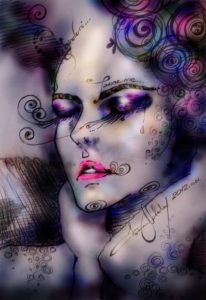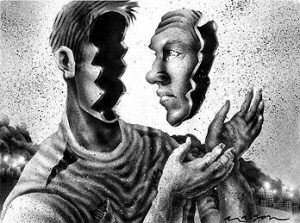Sleep is considered as integral part of our lives because it relieves our mental and physical stress of day-to-day life. Sleep is a “reset” button of our mind and body. We can live longer without food and water than without sleep. The average sleep of a healthy adult man is 8 hours, which means we sleep for 1/3rd of our life. Many hypotheses, theories, stories and supernatural phenomenon have long been associated with the physiological process of sleep until the Medical advances unfolded its secrets. It was presumed earlier that nothing happens in the body and brain during sleep. But it’s interesting to know that our brain is equally active during sleep. A dynamic and puzzling process unfolds during sleep, which we call dreams. A dream is a bottomless sea in which we dive during sleep. Nothing can encompass its vastness. Hence Dreams are a Window to Infinity. The field of dreams enables one to embark on a thrilling voyage of the universe. We slip into the past, we play around in the present, ponder about the future, and get lost in the abstract, and all this happens in our dreams.
The dictionary defines a dream as ‘A series of thoughts, images, and sensations occurring in a person’s mind during sleep’. Dreaming is an active process that constitutes three things; the person who is dreaming (dreamer), the characters of his dream (dream itself) and its occurrence during sleep (space). What a person dreams reflects his state of mind, which is more important. The protean manifestations, the versatility and the magnitude with which dreams occur bewilder us to see the magnificent field of mental activity that embraces the universe. A perception, sensation, notion, intuition, cognition, metaphor, symbol, image, and emotion – the dreams encompass all colors of the psyche. But remember, the ownership belongs to a person. No dream stands alone. It is meaningful only in relationship to the person.
The structure or the sequence of dreams is quite complicated. It can be chaotic. Recent and past events get mixed up. Events are like a movie that runs in a remarkable way. Inconsistencies, uncertainties and discontinuities characterize dreams. To illustrate; a big tree may look like a small plant and a small bird which normally sits on the branch of a tree may be seen as big as a house. The mind connects to symbols, distorts the proportion of them and reflects its perception. Visual reality and its dimensions cannot limit the boundaries of dreams. What we see with our open eyes is a factuality and reality bound by the specific dimensions. Dreams, on the contrary, seen with eyes closed are like a free form painting or portrait governed by the deepest emotions, which can magnify or zoom the object out of its proportion.
Dreams may be intriguing, ridiculous, mundane or frightening. But what do our dreams really mean? Where do they come from? The cause of dreaming is not material or physical in nature. Hence it is difficult to understand dreams. Dreams can reveal the inner mental state in a far clearer way. Mind has an ability to release repressed fears, anxieties and desires through conceptual imagery – the coded language of the subconscious brain.
It is observed in some individuals that even after waking up, the effect of a dream persists. This is called hypnopompic hallucination. One may experience inability to move after a fearful dream. This is known as sleep paralysis. A child after a nightmare may experience terror, palpitation and drenching sweat for a long time even after waking up. It means that the activity of brain during sleep merges with the conscious activity after waking from the sleep. In other words, the sub-conscious merges into the awakening state of consciousness.
DREAMS OF FAMOUS PERSONALITIES
ADOLF HITLER
In Nov 1870, German and French armies indulged in a combat and Hitler, who was dozing in a bunker, dreamt that “Debris and molten earth fell on him and suffocated him.” Mistaking his dream to be a reality, he ran out of his bunker. When he returned to his senses, he realized that it was a frightful dream. But within seconds a shell landed on the bunker where he was sleeping. Within no time, the bunker was destroyed killing all those sleeping inside. This dream saved Hitler’s life. He thought that there was a message in what had happened.
KEKULE
19th century German chemist Fried Rich Von Kekule dreamed of “A snake chasing its own tail.” The dream helped Kekule in visualizing the missing link in his research which was a circular ring formed by the carbon atoms in a chemical structure called the Benzene Ring. Today’s motorcars and airplanes owe their existence to this benzene ring in the petrochemical industry.
ABRAHAM LINCOLN
Just two days before he was assassinated, the President of United States of America dreamt very clearly. The dream was “He was lying dead in the coffin in the White House surrounded by the people who were mourning his death”.
TYPES OF DREAMS AND SOME REPERTORIAL THEMES
SAFETY VALUE DREAMS
This term was first used by Freud when he explained that dreams reflect psychological conflict. They can be wish fulfilling and quite often they express desires which are not expressed freely during wakefulness. Thus, a cherished aspiration, ambition, or ideal may find a vent in a dream. The repressed desires ‘float up’ in the form of dreams. They work as a safety valve. A little child may dream of a fairy bringing her a gift and a young lady may find her prince in her dreams.
RELATED RUBRICS
Mirilli’s themes; suppressed: Mind; dreams; emotions; suppressing:
Mind; dreams; encircled tightly, being:
Mind; destructiveness; emotions, from suppressed:
Mind; excitement, excitable; ailments from, agg.; mental and emotional consequences of; suppressed:
Mind; anger; ailments from, agg.; suppressed:
Mind; desires; nothing:
Mind; delusions, imaginations; creative power, has:
CREATIVE DREAMS
Subjects and actions, which are seen in dreams, can be applied in the development of an individual’s ability and functioning. They can be also a source of inspiration to the dreamer. An artistic man can find a new theme of his creativity in the dream.
RELATED RUBRICS
Mind; creative: Mind; activity; desire for; creative:
Mind; artistic; aptitude: Mind; delusions, imaginations; knowledge, he possesses infinite:
Mind; delusions, imaginations; intelligent, he is very:
Mind; dreams; positive, being:
Mind; positiveness:
Mind; constructive:
Mind; dreams; abilities, new:
Mind; dreams; achievement, of:
Mind; dreams; busy, being:
RECURRING OR SEQUENTIAL DREAMS
Repressed or suppressed desires or a problem, which could not be solved, may appear in the form of a repetitive dream or may also feature in a different set up with the same theme. Once a resolution to the problem is found, the recurring dreams cease to come up.
RELATED RUBRICS
Mind; repression, ailments from:
Mind; domination by others agg.:
FACTUAL DREAMS
Events and circumstances of daily life appear in dreams of an individual. Such dreams are known as factual dreams. Some people are engaged with their routine work to such an extent that even their dreams reflect their work.
RELATED RUBRICS
Mind; work; routine; desires: Mind; change; aversion to:
Mind; confusion of mind; daily affairs, about:
Mind; forgetfulness; daily things:
Mind; cares, worries, full of; domestic affairs, about:
Mind; sadness; domestic affairs, about:
PHYSIOLOGICAL DREAMS
Physical discomfort and sexual arousal may be represented in the dreams of an individual and such dreams are termed physiological dreams.
RELATED RUBRICS
Mind; dreams; amorous:
CLAIRVOYANT DREAMS
Some people dream what is going to happen in the future and astonishingly it turns out to be true.
RELATED RUBRICS
Mind; dreams; clairvoyant:
PROBLEM SOLVING OR SIGNAL DREAMS
There are some individuals who have the ability to solve problems in their dreams. This may be because they think intensely about the problems and they have a great desire to solve them.
A. Hadfield, a British Psychologist believes that dreams can be problem solving. He gives the example of a man who used to dream of meeting with an accident while driving his car. This was a warning sign. Gradually he started dreaming how he should take control of the situation and thus avoid the accident. If in his wakefulness a similar situation arises, and he acts the way he dreamt, he can avoid an accident.
Fritz Perts, an American Psychoanalyst, developed a new technique of solving a problem. He would ask the dreamer to act out the event of the dream as if it had really happened. He strongly believed that such acting out helps many patients to recover.
RELATED RUBRICS
Mind; dreams; emotions; stress, of:
Mind; stressed mentally and emotionally:
Mind; handle things anymore, cannot, overwhelmed by stress:
Healing Dreams
Healing dreams serve as messages for the dreamer in regards to their health. The Ancient Greeks called these dreams ‘prodromic’.
Research shows that asthma and migraine sufferers have certain types of dreams before an attack. The dreams can “tell” a person that something is “not right” with the body even before any physical symptoms show up.
Mind; dreams; disease: Mind; dreams; disease; incurable:
Mind; dreams; anxious; health, about:
Mind; dreams; relatives; frail health of:
Epic dreams (Great Dreams, Cosmic Dreams or Numinous Dreams)
They are so vast, so compelling, and so vivid that no one can understand them. These dreams possess much beauty and contain archetypal symbols.
Mind; dreams; splendor; earthly splendor and greatness:
Mind; dreams; universe, being in tune with:
Mind; dreams; strength, of great:
Mind; dreams; stars, of:
Mind; dreams; stars, of; falling:
Mind; dreams; zooming through stars:
Animal Dreams
They may be related to fear violence or even love of animals. It is necessary to analyze the dream in the context of the actual dream-the type of animal, his actions and the situation prevailing at that time.
Mind; dreams; animals, of: Mind; dreams; animals, of; attacking him:
Mind; dreams; animals, of; biting him:
Mind; dreams; animals, of; pursued by:
INSPIRATIONAL DREAMS
SALVADOR DALI
The famous Spanish painter derived his ideas and inspiration from his dreams.
OTTO LOEWI
A German born biochemist won the noble prize in 1936 for physiology for his crossed frog heart experiment, which led to the postulation of chemical neurotransmission. The dream, which he experienced, must be given its due credit.
TIPU SULTAN
A formidable opponent of the British Empire in India used to write down his dreams and get visions of fighting with the British.
CHARLES DICKENS
Material that came to him in his dreams helped to construct his novels.
GUISEPPE TARTINI
An Italian violinist dreamt of ‘A devil was playing violin’. He heard the melody in the dreams. This inspired him to write his famous sonata ‘ The Devil’s Quiver.’
DREAMS AS EXPLAINED IN AYURVEDA
- Drishta- whatever has been seen during waking hours is seen in the dream.
- Shruta- whatever is heard during waking hours is seen in the dream.
- Anubhut- whatever is experienced during waking hours is seen in the dreams.
- Prarthit- whatever is desired during waking hours is seen in dreams.
- Kalpit- imaginary.
- Bhavik- Dream which comes true.
- Doshaj- Depending on Kafa, Pitta and Vata
EXAMPLES
Kafa (Tendency to generate phlegm): Lotus, a row of birds, lakes clouds or no dreams or unremembered dreams.
Pitta (Tendency for bilious problems): Yellow flower, fire in all directions, falling, lightening, storm, sun, adventure.
Vata (Rheumatic tendency): Climbing a mountain, tree or sky, frightful, of daily events.
INTRA-PSYCHIC COMMUNICATION (IPC) AND DREAMS
The dream is like a playground to execute our unfulfilled desires at the subconscious level, which we are unable to do in reality or a conscious state. Who would not like to dream in today’s world when every single day of reality is challenging and beyond our reach? Dream, in that sense, acts as a vent to our innermost desires and wishes. Dream constitutes the infinite journey to travel anywhere, without a ticket, in the realm of ideas and images, with no restraint of time and space.
Dream constitutes two things – the dream itself and the subject who dreams. Most of the time you dream what you wish or desire, and in that instance you are the creator of your dream; while sometimes you dream what you have never thought of or what you have never wished for. Such dreams are symbolic and demand interpretation and it is this variety of dreams that are important from a homoeopathic point of view. They might give an important clue about a remedy.
Dream is a good example of IPC, in the sense that it originates in the sub-conscious field of self. Before Greek philosophy, the ancient Mediterranean people believed that dreams had an objective existence, independent of the dreamer. Greek philosophy recognizes the dream as a psychic event rather than as an external visitation.
THEORIES OF DREAMS
It is interesting to see how different psychologists have formulated their ideas about the interpretation of dreams.
Sigmund Freud first argued that the foundation of all dream content is wish fulfillment and that the instigation of a dream is always to be found in the events of the day preceding the dream. The latent dream-thought was described as having been subject to intra-psychic force referred to as ‘the censor’; in the more refined terminology of his later years, however, discussion was in terms of the super-ego and ‘the work of the ego‘s forces of defense’. In waking life, he asserted, these so-called ‘resistances’ altogether prevented the repressed wishes of the unconscious from entering consciousness and though these wishes were to some extent able to emerge during the lowered state of sleep, the resistances were still strong enough to produce ‘a veil of disguise’ sufficient to hide their true nature. Freud’s view was that dreams are compromises which ensure that sleep is not interrupted: as ‘a disguised fulfillment of repressed wishes’, they succeed in representing wishes as fulfilled which might otherwise disturb and waken the dreamer.
Carl Jung said that the most likely reality is that there is no such thing as body and mind but rather that they are the same life, subject to the same laws, and what the body does is happening in the mind. Dream analysis forms a critical part of the therapeutic process in classical Jungian analysis. Jung believed the psyche to be a self-regulating organism in which conscious attitudes were likely to be compensated for unconsciously (within the dream) by their opposites. Jung believed that dreams might contain ineluctable truths, philosophical pronouncements, illusions, wild fantasies, memories, plans, irrational experiences and even telepathic visions. Just as the psyche has a diurnal side, which we experience as conscious life, it has an unconscious nocturnal side, which we apprehend as dreamlike fantasy.
Calvin Hall, an American psychologist, developed a theory of dreams in which dreaming is considered to be a cognitive process. Hall argued that a dream is simply a thought or sequence of thoughts that occurred during sleep and that dream images are visual representations of personal conceptions. For example, if one dreams of being attacked by friends, this may be a manifestation of fear of friendship. Calvin Hall writes, “A dream is a document, a letter written to one self. It furnishes knowledge about us.”
Many researchers have studied the complexity of dreams and tried to solve its mystery. Their studies help us to understand the process of dream to a great extent. But this is not an end.
There are some unusual types of dreams, which do not fall into any of the above categories. They are documented in the ancient religious texts. It is a supernatural phenomenon where a person who is enlightened can communicate with the world unseen and can grasp messages, which no one else can explain. The divine revelations fall into this category. Supernatural science proves that a powerful and enlightened mind has an ability to communicate with Cosmic things or it has an ability to receive Cosmic messages.
These theories demonstrate that the central nucleus of dream is the self; it is from self that springs the whole gamut of dreams and it is the self that represents the universe, as perceived by him during the dreams.
WHAT HAVE DREAMS TO OFFER TO A HOMOEOPATH?
No one can build a dream with his conscious mind! He may lie about a dream or may theorize a non-existing dream. But our conscious mind has no control over the process of dreaming. Hence, dreams can’t be manipulated. No one can create a dream out of thoughts or perceptions or in a laboratory and sell it. It is an experiential field. Dream is a mental state, a deeper and inner state. It is a subconscious reality. Dreams can be relied upon as a characteristic feature. In some cases dreams can even act as an eliminating feature. They may seem ephemeral, but as a matter of fact, they are objective facts.
Dreams open up the cognitive, symbolic and metaphoric world to us. Dreams also form a part of doctrine of signatures in some cases. If a homoeopath is able to unlock this symbolic language, dreams can be profoundly meaningful. The field of dreams is very wide, ranging from superficial to deeper, from nowhere to somewhere, from meaninglessness to meaningfulness. The string of dreams connects to the past, present and future and it is one of the entry points to develop evolutionary totality of the patient. Actually dreams do not follow the dimension of time or space. They transgress all physical dimensions.
In some cases, sickness or disease process masks the true underlying mental state of an individual. It is difficult, therefore, to identify the true mental picture of the individual especially in the diseased state when the presenting expressions are nothing but mere features of the disease. In such cases, dreams may give a clue to the core mental state of an individual.
Dreams can be connected to various deviant mental states through hallucination, disorientation, bizarre thoughts, and delusion. Dreams can define the individual’s conception of self and others and can aid in understanding emotions, impulses, intentions, wishes – fulfilled or unfulfilled, inner conflicts and defense mechanisms of the mind. One has to judge its objectivity and the field of dreams must be seen in the light of totality. Oft repeated dreams have more value but it doesn’t mean that one has to ignore the infrequent dream. Even a single dream may unlock a case and can provide useful information to work out. reams are not only the byproduct of sleep. They should be analyzed not only from their vantage point of finding a remedy but also from their beneficial effects and psychotherapy if needed.
SOME EXAMPLES
Case 1
I was once consulted for an acute ‘nervous breakdown’. The patient was a teacher, a noble man, helping everyone. He was staying in a small house with his brother and parents. Problems started after his brother got married. Differences surfaced between his wife and his brother’s wife who was also not comfortable with his mother. With the passing time, differences intensified to the extent of intolerability. The patient tried to bring an amicable solution but all in vain. Finally the brother, his wife and a child started staying separately. Cold war continued between them. A new quarrel grew up when his brother’s wife asked the mother in law to stay with her due to nearing delivery but she refused. This irritated both the brother and his wife. They came to the patient’s house to quarrel. They eventually severed all relations. They accused the patient of planning a plot against them for not sending the mother for help. This affected patient so much that he became panicky, restless and depressed.
He complained of sleeplessness. Frequently waking up with tormenting thoughts. He withdrew himself from the society. He was unable to attend school. He was unable even to read the daily newspaper, unable to concentrate and there was constant irritability, guilt and self reproach. He also complained of trembling of hands. I gave him Arsenic album, Arg-nitricum and Cyclemen without much benefit. On the next visit, he told me that he has a daily dream that someone is throttling him and he has to wake up with fright.
I focused on the following points.
The theme of conscience is at the base of an acute reactive episode and the remedy must cover this point. There is irritability, nervousness and withdrawal in this typical dream. I searched for rubrics in Radar.
As Silica came through, I decided to try it and with few doses of Silica 200, the case responded nicely. Reference to materia medica indicated that it fits in well with the theme of the case and this typical dream of being strangled.
Case 2
I was consulted by a lady aged 60 for osteo-arthritis of both knees. She took treatment for many months but without appreciable benefit. I had put her on Lycopodium 12 C daily two times due to her clairvoyant dreams and other physical generals. The lady was regarded as a spiritual guru and she would send some disciple to collect the medicine and each time a disciple would mention her greatness, clairvoyance etc. As she was not feeling better, I sent a message to meet me personally. She came and it took less than 15 minutes to understand that she is not Lyco but Platina. Actually, she was carrying a delusion that she is great and clairvoyant dreams were a part of her larger space. Had I not looked beyond the so-called clairvoyant dreams, I might have persisted with Lyc. Platina relieved the pains of knee joints.
Conclusion
Dreams make sense. They reflect the uncompensated state of the mind. Hence they must be probed during childhood. Dreams can reflect the actual life stress as is experienced – a kind of mirroring. Dreams need interpretation. Dreams need analysis and evaluation. Direct extrapolation of dreams as rubrics can prove dangerous! One has to be wary. Dreams abound. Theories abound. Stylish interpretations abound. A homoeopath should not be a dreamer; he shouldn’t just become a dream-doctor, but should search for objective reality. Dreams have abundant offerings for a serious homoeopath!
References
- Body Language and Homeopathy, by Dr. Ajit Kulkarni
- A Select Homeopathic Materia medica, by Dr. P. I. Tarkas and Dr. Ajit Kulkarni
- The Use of Dreams in Homeopathic Treatment, by Jane Tara Cicchetti










